Check valve for washing machine: selection and installation
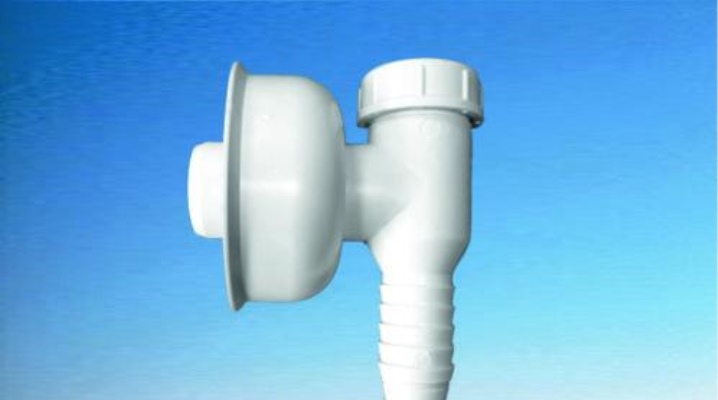
The quality of removing dirt during the washing process depends not only on the parameters of the washing machine and detergents, but also on the correct connection. The washing unit must, along with pumping clean water, ensure that the waste water is drained into the sewer system. Basically, there are no difficulties with water injection. And an illiterate drain device can provoke a whole range of complications.
Contaminated liquid medium from the sewer pipes has the ability to penetrate back into the tank of the machine. To block the flow of water going in the opposite direction, it is required to install a non-return valve (anti-siphon) on the drain hose of the washing machine.
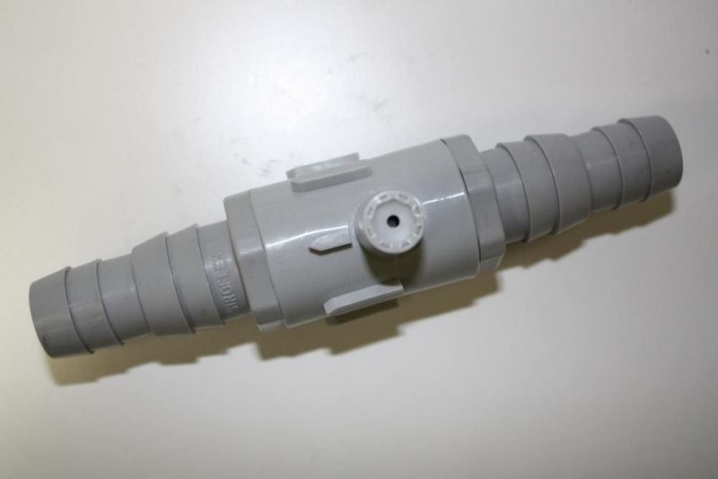
What it is?
As mentioned above, in case of illiterate connection to the sewage system, dirty water from the drain can return to the tank, which increases the cost of electrical energy and spoils the laundry. The non-return (anti-siphon) hydraulic valve does not interfere with the planned withdrawal of used water from the washing machine tank. And in case of an attempt to return it from the sewer system to the tank, the valve in the valve structure instantly blocks its path. This small piping component is suitable for any modification of the washing unit. Despite the damper, it does not in any way obstruct the drainage of the water.
The quality of removing dirt from things depends on the type of antisiphon and the manufacturer.
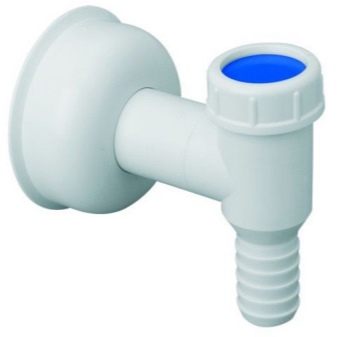
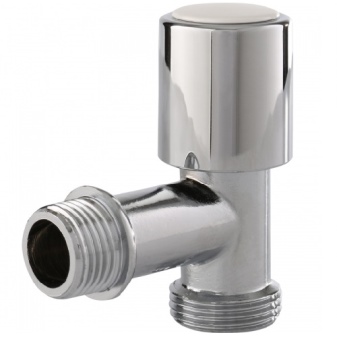
Principle of operation
The valve functioning scheme is simple. It is a tube of a certain configuration, in which there is a ball or spring valve... This device is mounted on a siphon, drain hose or sewer pipe anywhere. During operation, water from the washing machine is supplied under pressure to the non-return valve and then drained into the sewer. When back pressure arises, the liquid medium is not able to return back, since the anti-siphon mechanism no longer opens.
The barrier is formed by means of a spring and a rubber diaphragm. Specifically, they and protect the drain system from the flow of waste water... If we are talking about a ball valve, then the function of a protector in it is played by a ball made of rubber, which is a shutter. Under the pressure of the liquid, it is pressed against the diaphragm, and after that it returns to its original place. The ball does not need to be cleaned, since the mechanism itself does this through specialized ribs.
There are hydraulic check valves both individually and integrated into the siphons for shower cabins and sinks... Siphons equipped with check valves prevent the penetration of liquid from showers and sinks into the washing unit, while simultaneously excluding the independent outflow of the spent liquid medium from the washing machine.

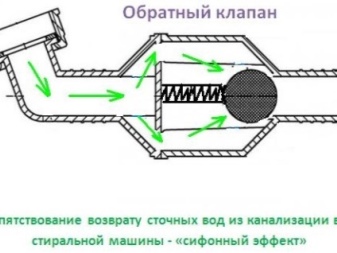
Species overview
There are a lot of varieties of antisiphons. There are 5 basic modifications of such valves on the market. They do not have significant differences, all devices are designed for a single task - protect the machine from the return of waste water and create conditions for the regular discharge of contaminated fluid.
However, the connection of certain washing machines to the gutter has its own characteristics.

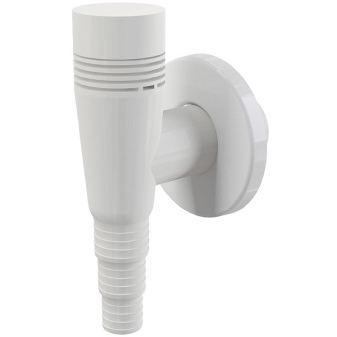
By design features
- Segmental (collapsible) - metal devices consisting of several elements.This type is practical in that, if necessary, it can be disassembled and cleaned of various debris and deposits.
- One-piece (non-separable) - a single structure made of plastic. It is the most affordable option.
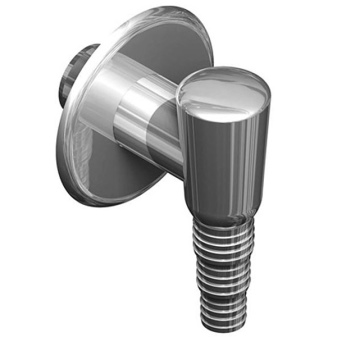
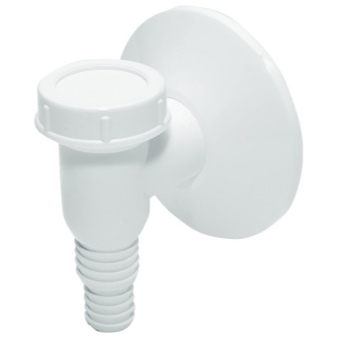
By installation type
- Wall-mounted (wall-mounted) antisiphons are distinguished by their high cost. Their use is justified when the gutter system is arranged in an insignificant space between the wall and the outer panel of the washing machine. This type of valve is quite compact and will make it possible to significantly save free space by being placed along the wall. In addition, the stylish chrome-plated metal structure complements the decor.
- Flush-type valves (requiring a tie-in) - are installed directly into the pipe, in place of the fragment cut from it.
- Washing rooms (installed under the sink) - non-return valves designed for use in drain siphons of washbasins and sinks. They are placed under the sink, usually connected to the sink siphon. They suit virtually any siphon configuration, do not take up much space, are practical and easy to use.
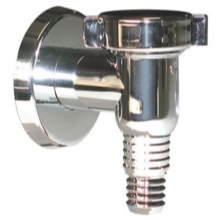
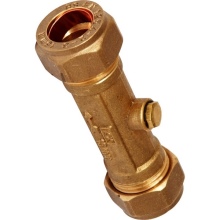
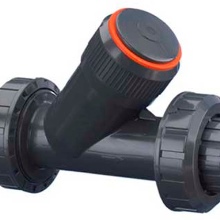
How to choose?
The instructions for individual washing machines may contain specific information. It has to do with the choice of a check valve. In such a situation, the choice is determined by the practical manual for the machine. The choice of an anti-siphon is dictated by a specific situation. The most important thing is to make a decision in advance: where the device will be installed, what quality of water, is there enough space in the place chosen for installation. The decision made determines the subsequent purchase steps.
Regardless of the brand of the washing unit (it does not matter if you have Bosch, Samsung or another brand), you have the opportunity to purchase any type of valve (but the recommendation of the service center or an experienced specialist will not be superfluous)... In such a situation, it is preferable to focus on the place where the drain hose is connected, on water (dirtiness and hardness), the frequency of washing and the indicator of how dirty things are. When the water from the water supply is hard and the linen is decently contaminated (for example, you often wash overalls or children's clothes), it would be nice to purchase a segment type - it can be disassembled and cleaned when clogged. With a non-separable device, such a "number" will not work, you will need to change to a new one, access to the place of its installation should be free.
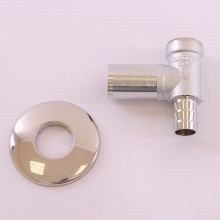
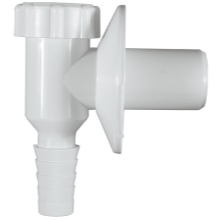
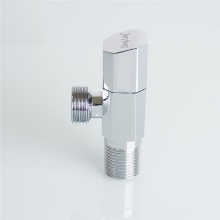
The wall type is not a cheap pleasure, but a fundamentally irreplaceable and justified device when the drainage communication needs to be squeezed into a narrow gap (between the wall and the washing machine). Chromium is often used in the manufacture. Chrome parts harmoniously "get along" with any tiles and sanitary fixtures. Polypropylene varieties are also popular.
The cut-in version is suitable for draining directly to the sewer system. This is the simplest installation method for a drain pipe, but highly reliable. The check valve under the sink is perfectly combined with a siphon of any structure. Its dimensions are designed just for installation with a siphon tube. There is a solid protection against arbitrary discharge of liquid into the sewer or its return from the drainage system to the tank. When draining into the sink, not a single drop will end up in the washing machine.
It is simply disassembled and cleared of debris when needed.


On a note! There is an important factor: the diameters of the washing machine hose, the sewer pipe and the openings of the hydraulic check valve (the sink drain element with it) must exactly match. The use of adapters in such a case is undesirable, since the more joints, the less reliable the whole structure as a whole (even with proper sealing of the joints of parts).
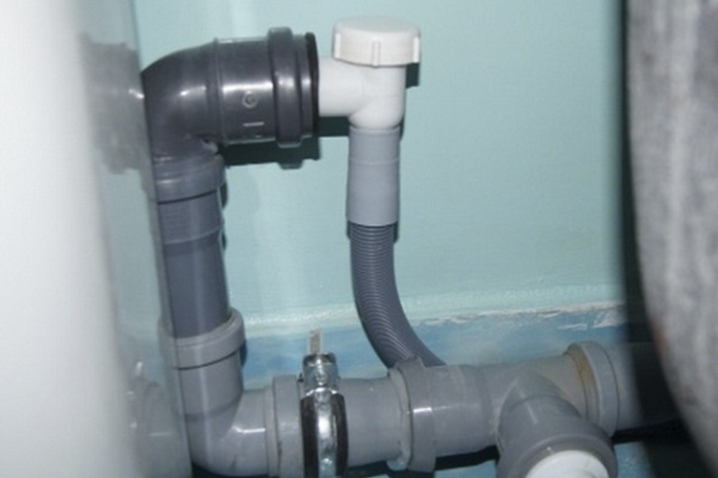
How to install?
Anti-siphons of various modifications have the same principle of operation and installation.In order to carry out the installation of the drain system with your own hands, you will need special tools and accessories. To install you need:
- pipe cutter for metal-plastic pipes;
- soldering iron for welding plastics;
- siphon equipped with a specialized outlet designed to fix the drain hose;
- non-return valve (anti-siphon);
- rubber cuffs for sealing;
- ball valve;
- flexible hose;
- silicone adhesive sealant.

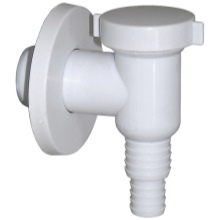
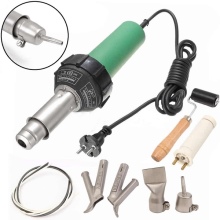
The installation of the drain system must be carried out according to the following rules.
- First of all, one should turn off the washing machine from the mains and shut off the water supply.
- Necessary check the health of the sewerage system, whether there are any obstructions, leaks.
- Next is install an anti-siphon. To do this, connect one end of it to the sewer pipe, and attach the other to the drain hose of the washing machine.
- Connections you need treat with silicone glue-sealant and seal with cuffs.

If it is not possible to install the drain hose at the level recommended by the practical guide, it should be connected to a specialized siphon outlet located in the sink, or an anti-siphon seal should be installed. In conclusion, it must be said that there is not always a need to install an anti-siphon. Professionals advise installing it in the following situations:
- when required connect the machine directly to the sewer pipe, which is technically impossible to raise, and at the same time the inset is too low;
- when required connect the drain hose to the siphonlocated under the sink.
When the drain pipe is raised to the required height and the drain hose is connected according to the rules, then there is no need to connect an anti-siphon device.
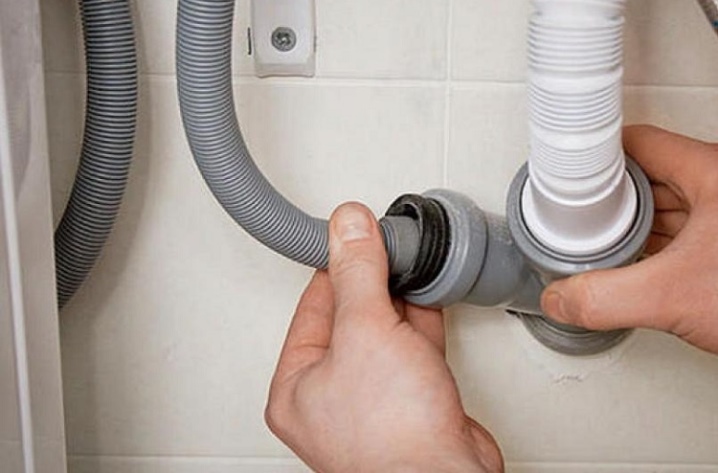
You can see a video review of siphons for washing machines from the Czech company Alca Plast APS1 and APS2 below.













The comment was sent successfully.